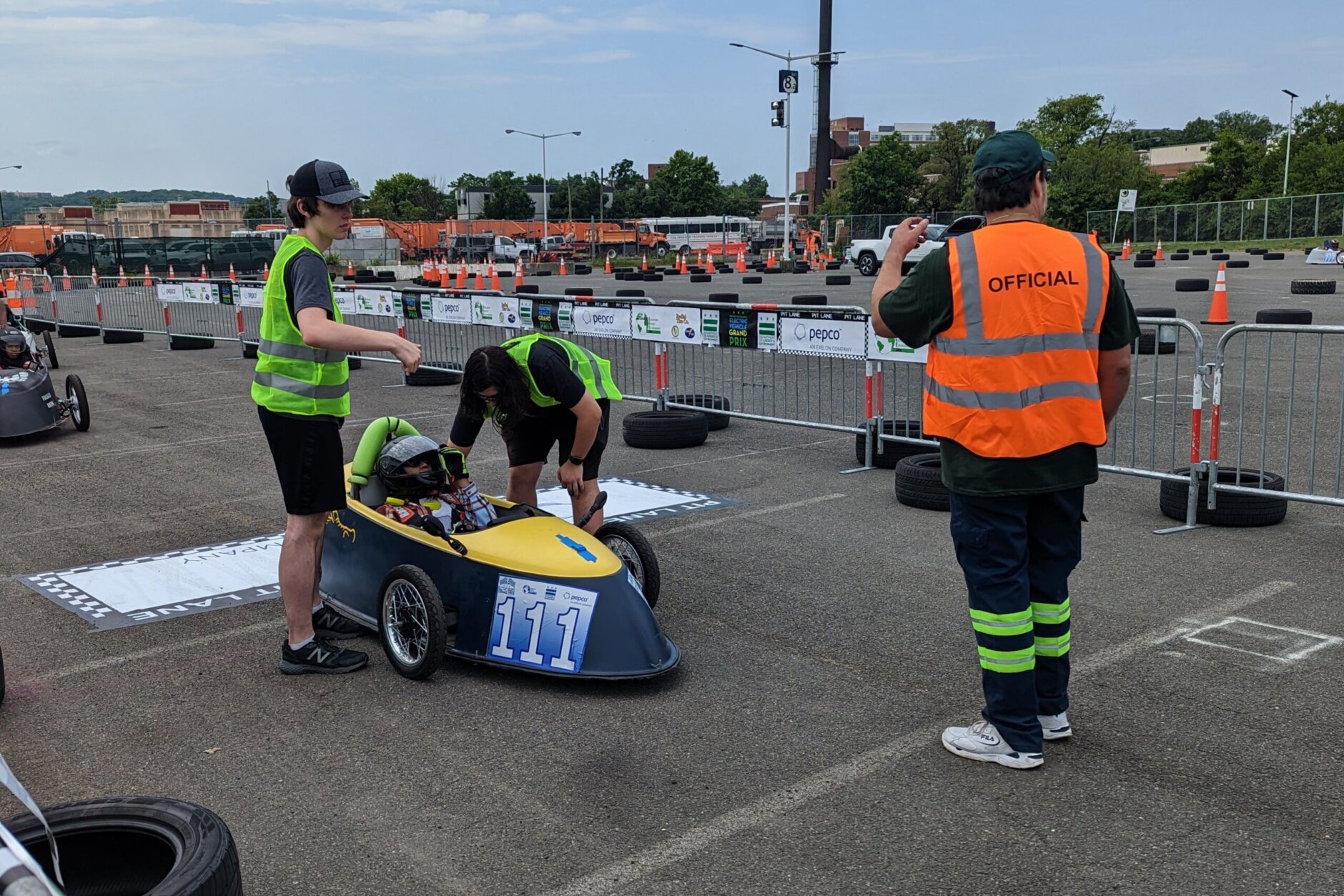
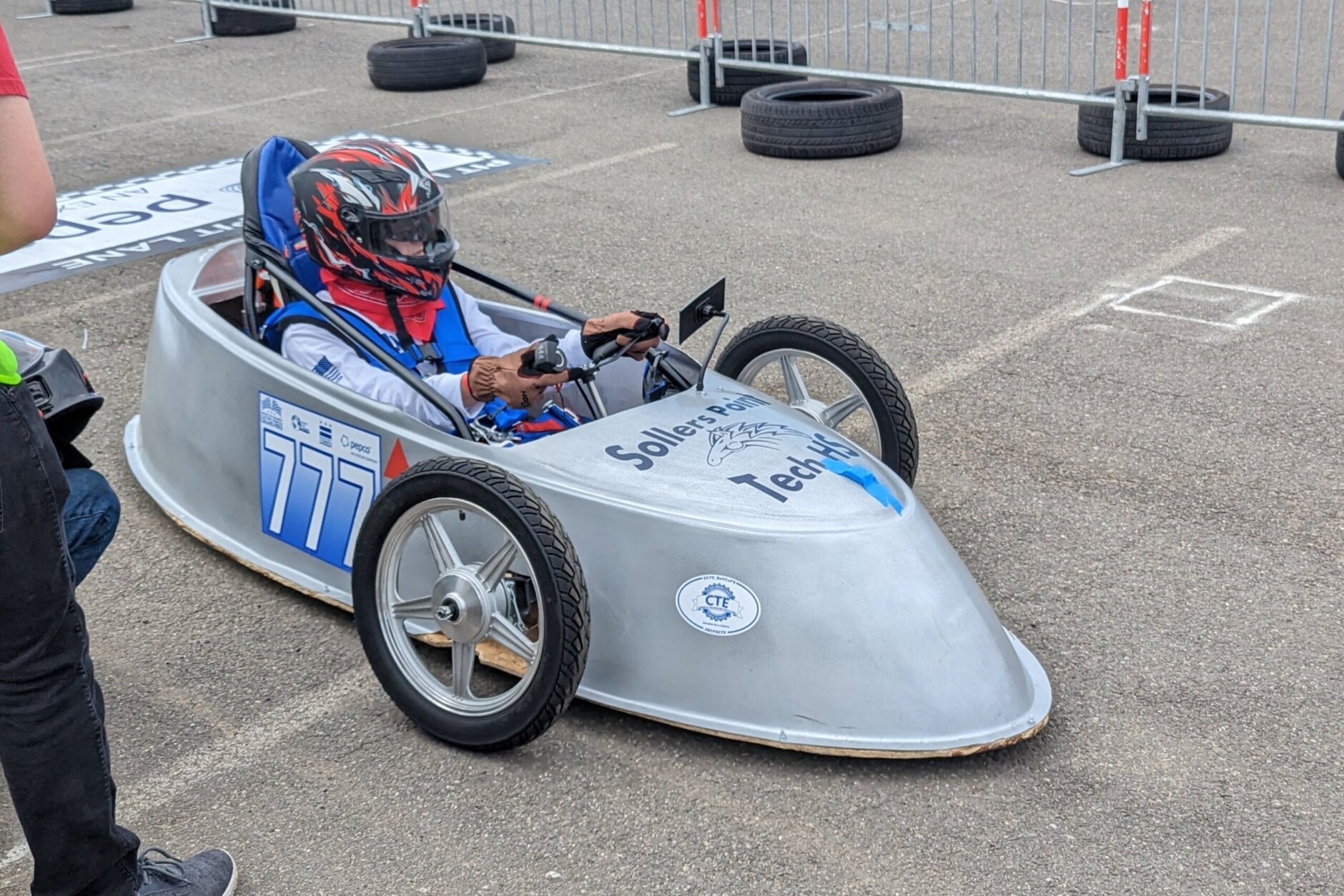
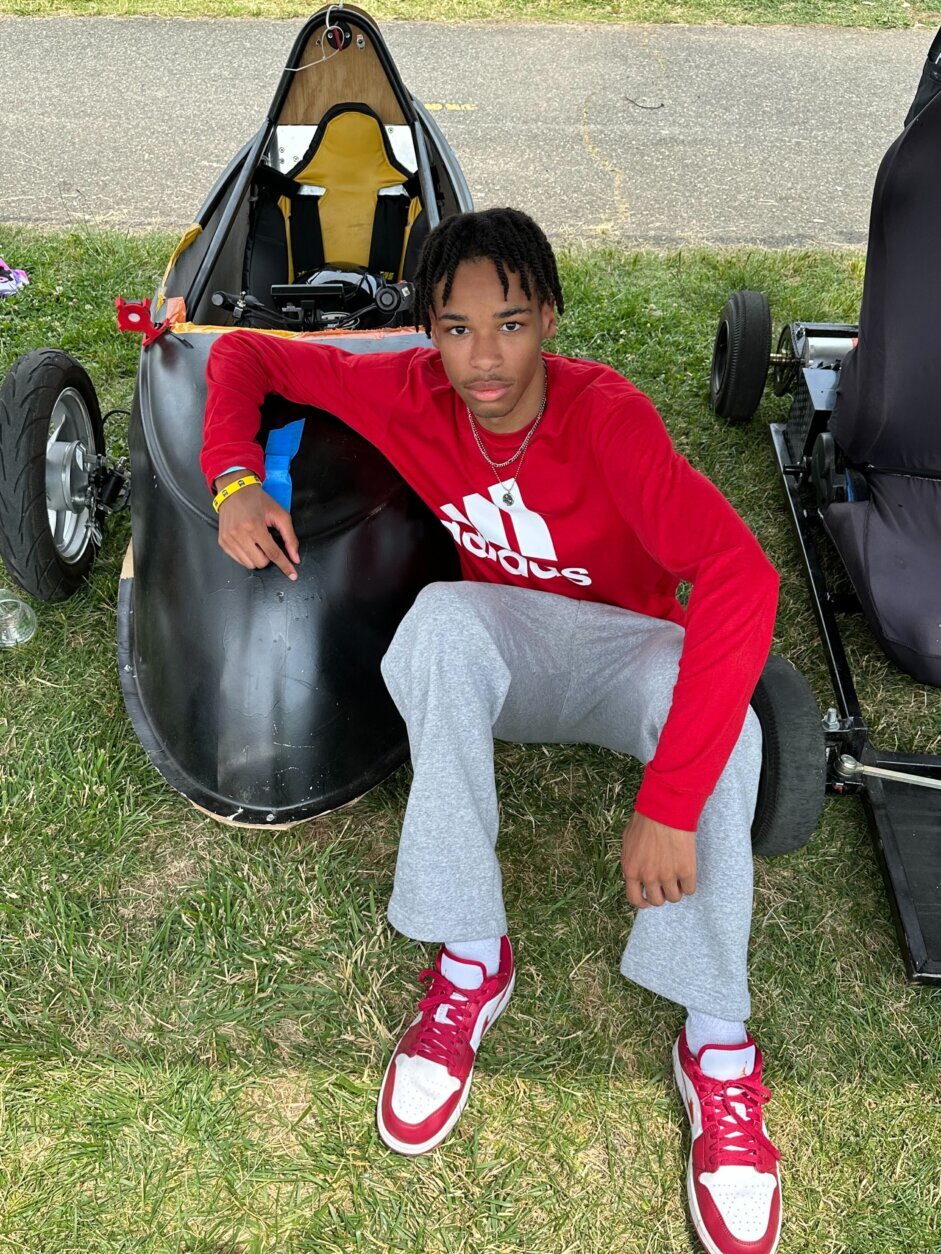
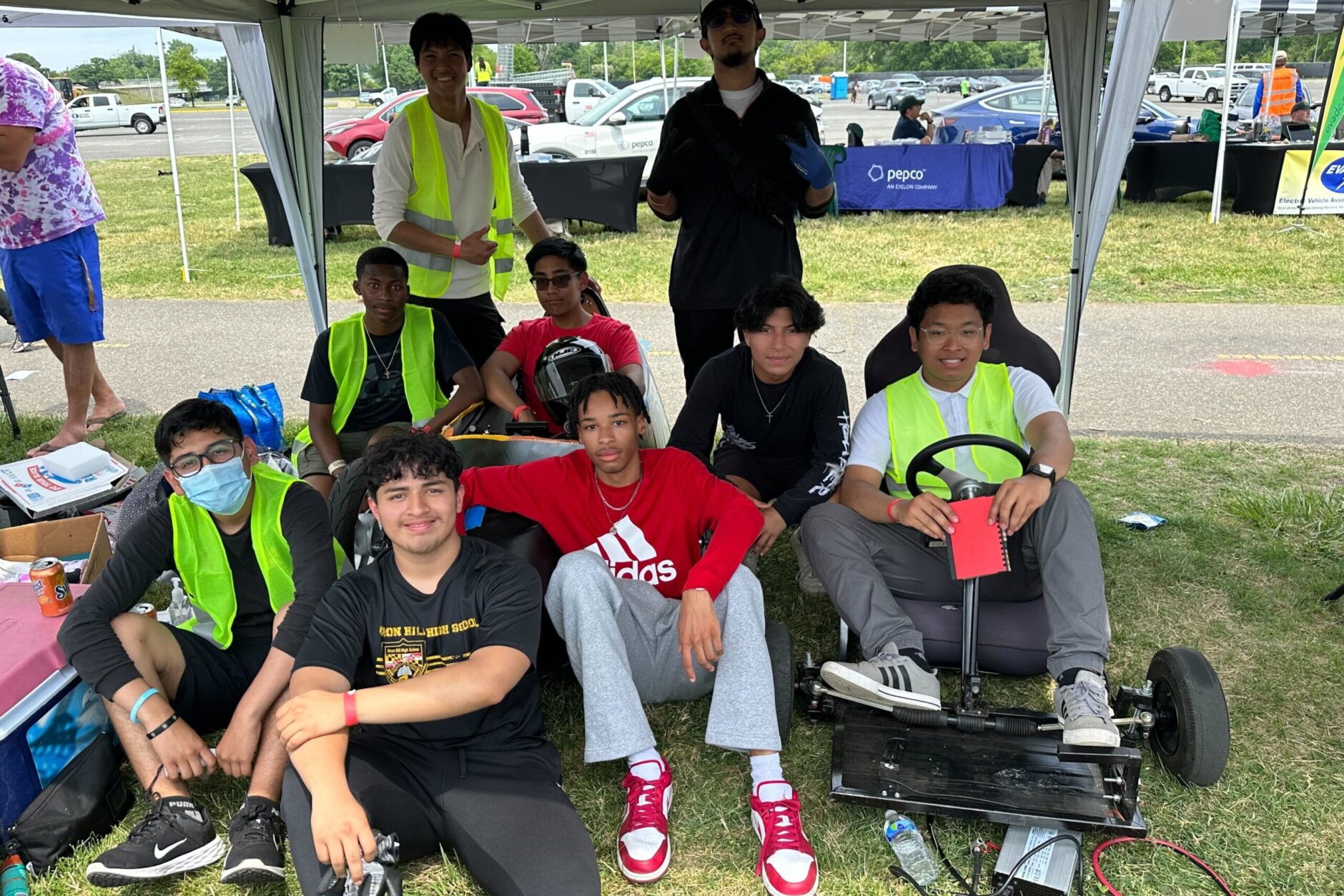

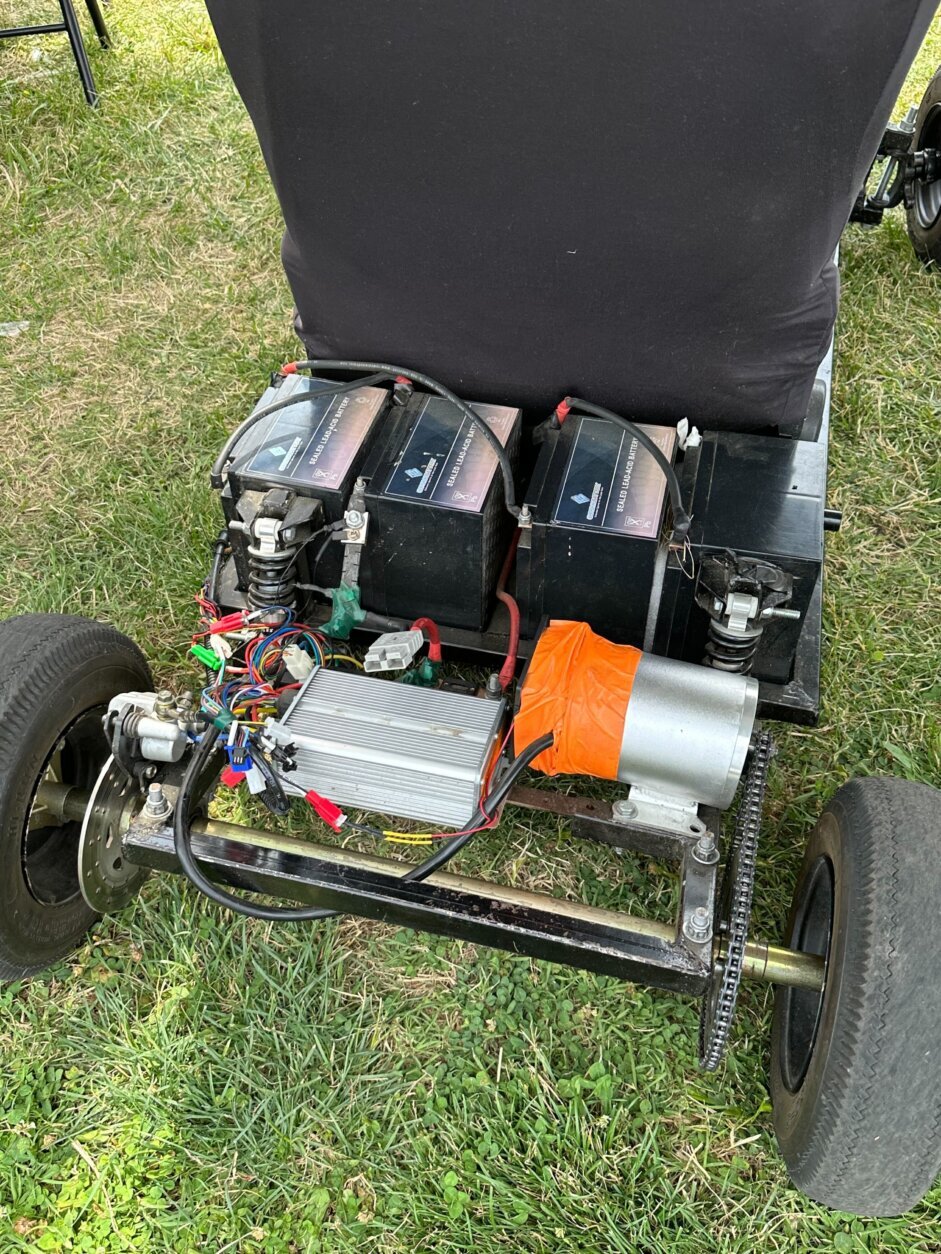
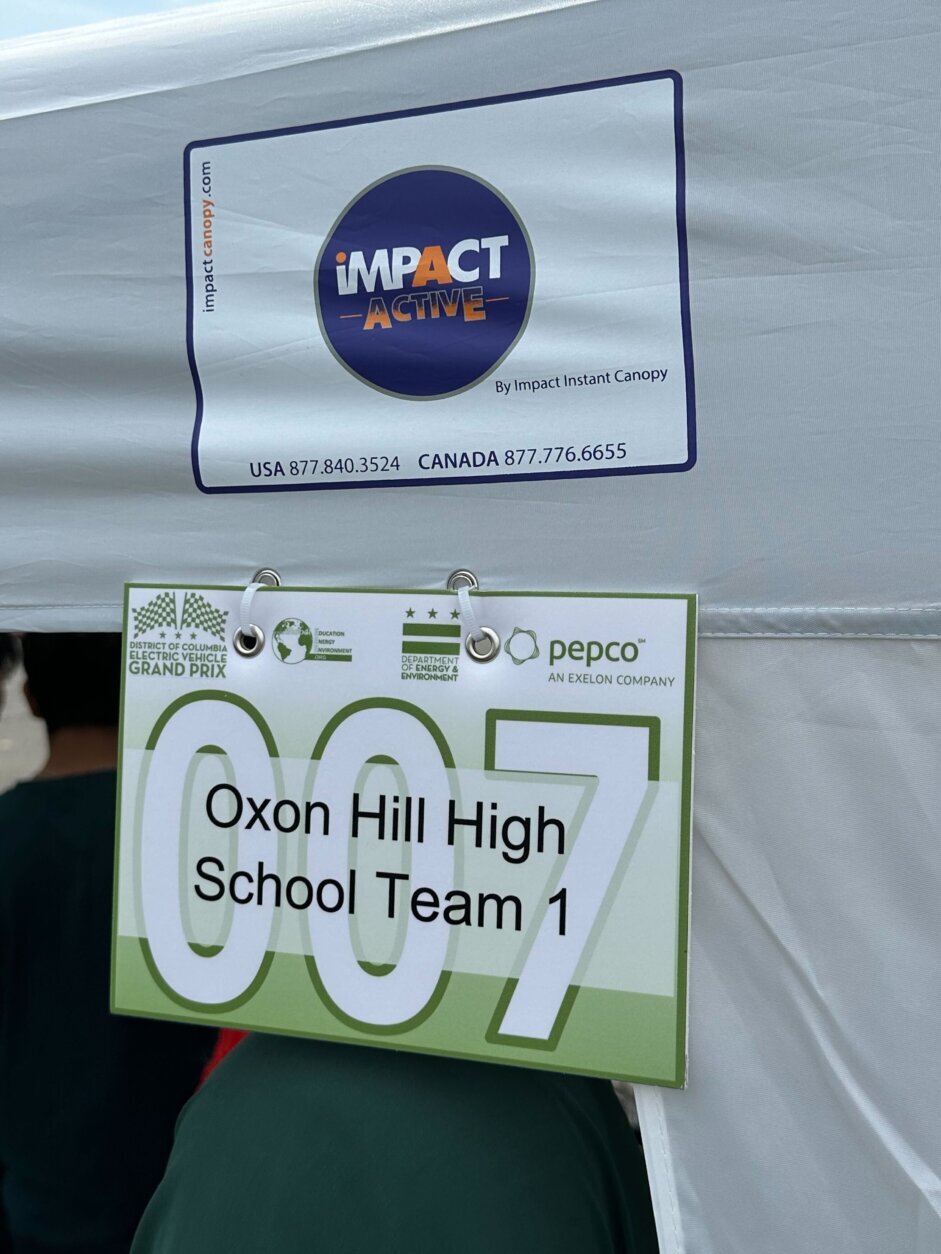
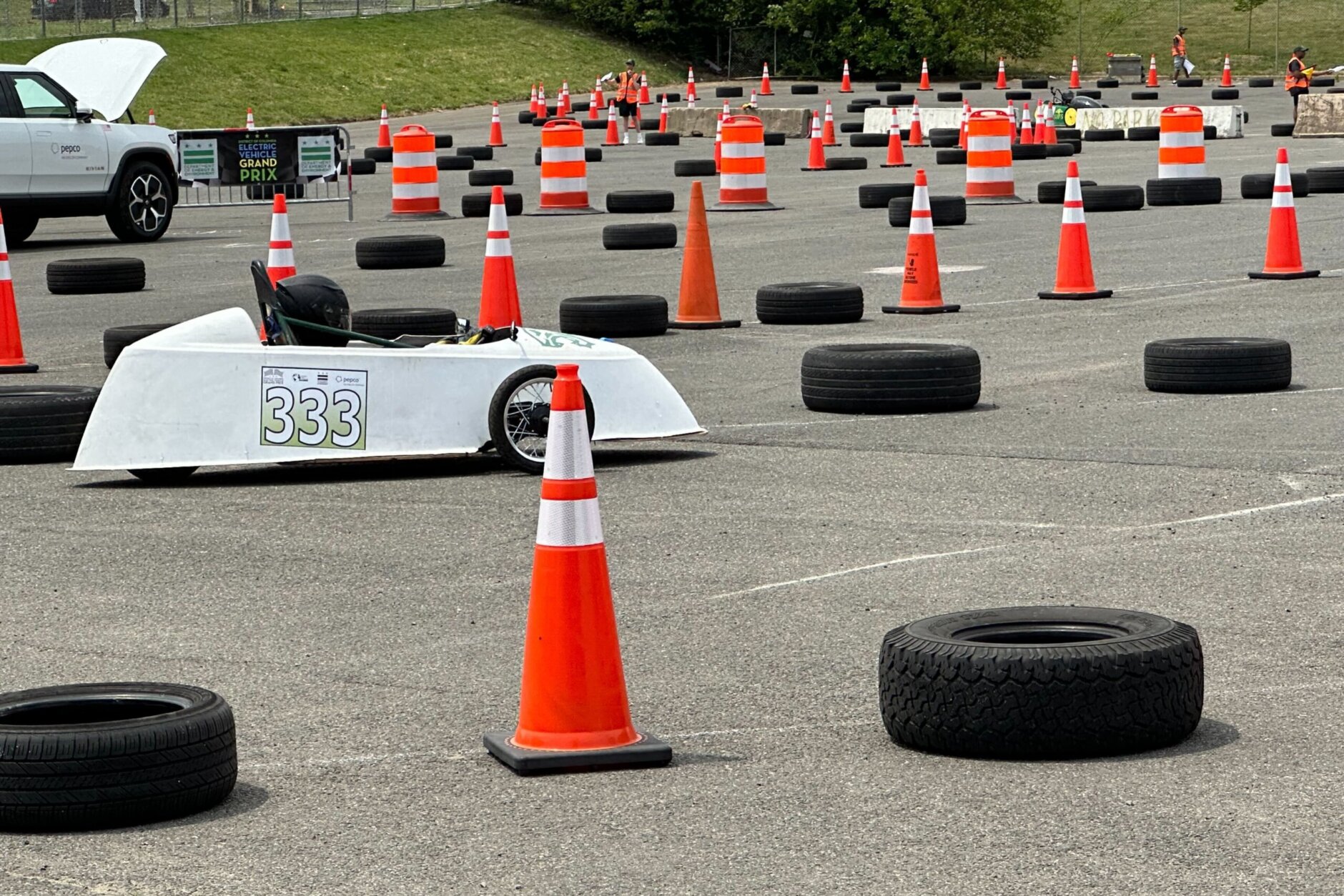
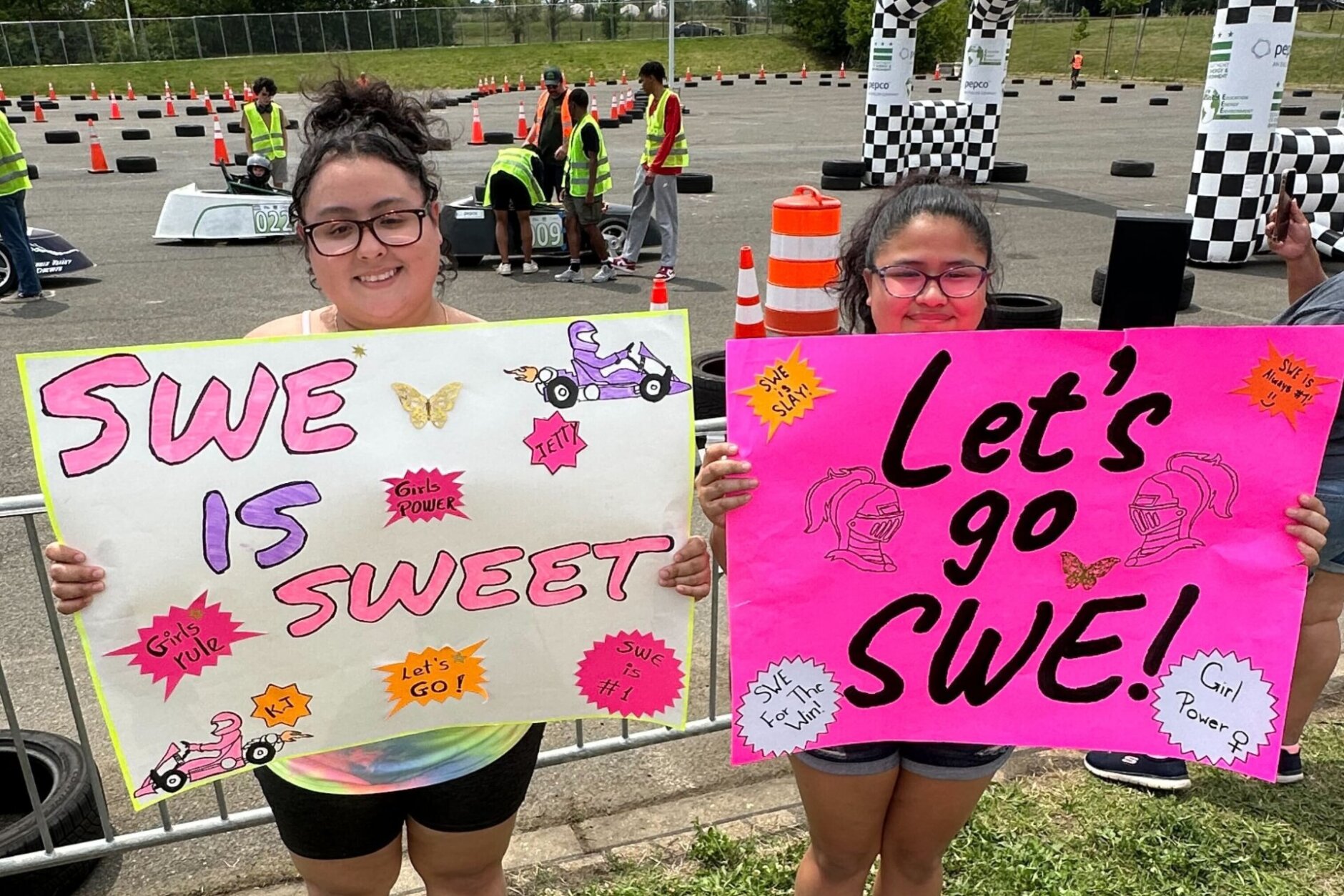
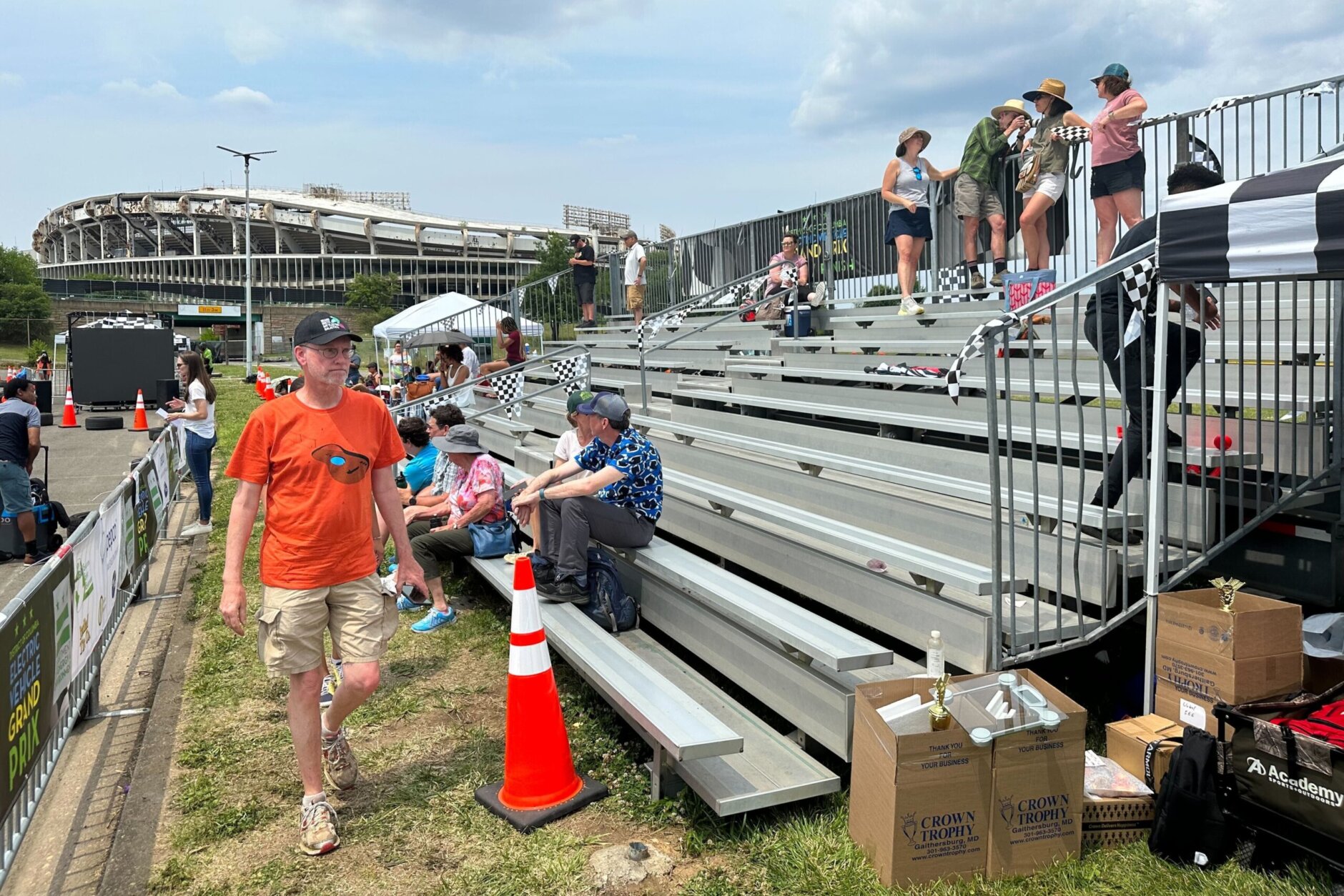
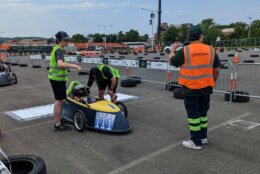
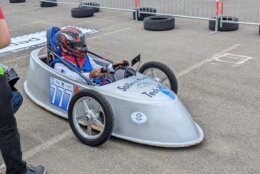
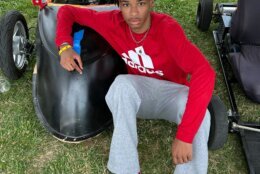
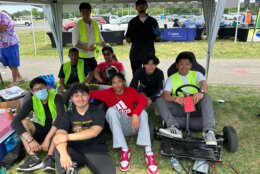
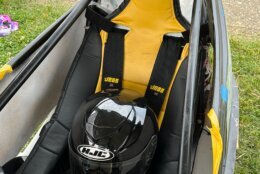
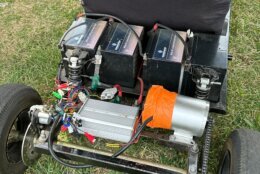
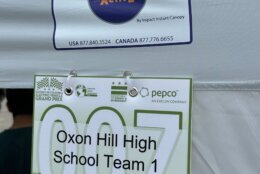
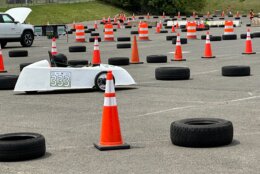
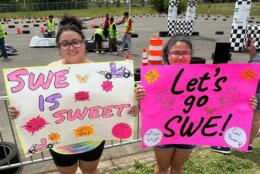
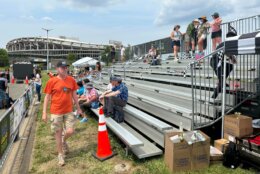
The cheers were loud at RFK Stadium in D.C. on Saturday afternoon, but the engines? Not so much — and for good reason.
High school students from across the D.C. region raced each other in the EV Grand Prix in what could appropriately be described as an electric atmosphere.
“We give students who are in the field of STEM hands-on experience of what it’s like to build an EV,” said Pepco spokesperson William Ellis. “Hopefully, these students become the engineers and mechanics who might work for us in this field someday.”
The electric company and the nonprofit Global EEE helped sponsor the event, which Ellis said was the culmination of an entire year’s worth of work.
D.C.-area students built their cars from the ground up, and the sights and sounds of well-powered machines echoed throughout the paddock as cars zipped around the track — quietly.
Despite the warm temperatures and the sun bearing down on spectators in the grandstand, many families came out bearing signs to support their kids, contributing to an atmosphere that at times seemed downright raucous.
“You don’t hear the noise of the cars, but you hear the noise of the parents and students cheering on their team,” Ellis said.
The EV project is designed to help students improve their understanding of renewable energy technologies and project management while working in a team environment, Ellis said. It also serves as an opportunity for them to better prepare for college programs in science and engineering.
The electric vehicles are single person, lightweight and electric-motor-driven with three wheels. Teams had to follow specific design and safety rules — much like professional racing leagues like Formula E mandate.
The students’ teams drove their electrically powered vehicles as far as possible for one hour on a closed loop course — using only energy stored in their batteries on Saturday. The goal was to drive the longest distance in the allotted hour, but students like Jovan Beezerdwyer say — there’s so much more to it than that.
“We made sure as we were racing, we were getting data knowing how much power to use (and) how many laps we wanted each time,” Beezerdwyer told WTOP.
The 17-year-old is class president and head of the math and science clubs within Oxon Hill High School’s Science and Technology Program. Beezerdwyer said owed his success to his teammates and fellow students, as well as teachers who worked tirelessly to assist them.
When asked about the work that goes into making an EV vehicle, the rising senior replied: “Oh my god,” laughing, he added, “how much time you got?”
“You’ve got to make sure you’re focusing on what matters, and even the little things that you don’t think matter,” Beezerdwyer said. “The most minor things that you won’t even think matter — they matter,”
He added that events like this are moments he considers great prep for real life.
“It helps out a lot, especially as someone who wants to be an aerospace engineer,” he said.
Both Beezerdwyer and Ellis said early education for students and their families about how a gradual move toward an all-electric future gives participants a huge leg up.
“It’s our commitment to a sustainable future in the face of climate change,” Ellis said.








